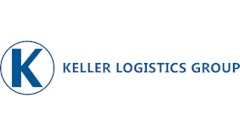
A multinational company, trading and doing business all over the world, needs an effective real estate strategy to enable its global supply chain operations. Developing an in-depth understanding of the global supply chain, as well as the factors that drive its continuing evolution, is as essential for corporate real estate professionals as it is for their supply chain counterparts to ensure that they can deliver the most efficient and effective solutions for their company and its customers.
Truly global supply chains emerged in the following decades and continue to evolve and change today. Supply chains are longer and more complex, involving worldwide networks of sourcing, manufacturing and consumption. They challenge corporate supply chain and real estate executives to come up with solutions that help companies manage the intricate logistics of today’s systems and plan for the demands of the future.
Focus On Total Operating Costs
Remember the “80-20” rule? When a CSCO looks at the total operating costs associated with a distribution center, real estate, while vitally important, is not a major cost factor. In fact, according to at least one third-party source (Exchange Inc.’s “Logistics Cost & Service Report”), as much as 80 percent of total operating costs are in logistics, including transportation, inventory and labor, so this is where supply chain practitioners understandably focus.
It is obviously important to take the “80 percent” into consideration when de?ning solutions. But, although real estate costs may only represent 5 percent of total operating costs on average, getting the right real estate deal done is critical to “pinning the solution to the ground” and executing the plan.
Transportation: Representing approximately 50 percent of total operating costs, transportation is one of the largest cost buckets in the supply chain. The most significant mode of freight transportation (approximately 75 percent) is via truck. Other modes, such as ocean, barge, rail, air and intermodal, still represent only a small segment today for most companies.
Future Trends' Impact On Commercial Real Estate
As transportation costs rise, what predictions can be made about the supply chain of the future? Today’s growing trend is toward investment in transportation by rail.
What's the attraction of rail? More than investment interest, rail offers several advantages over long-haul trucking. Trains produce 40 to 60 percent fewer greenhouse gas emissions compared with trucks, yielding a huge bene?t in sustainability. Freight costs are much lower, at approximately one-third the cost of trucking. Rail can also be a solution to traf?c congestion. Moreover, railways have become more technology-savvy, better at managing their assets and deploying rail cars.
Rail is the only viable alternative to trucking. Within the United States, for most companies, barge transport is not feasible and airfreight is too costly. Other than trucking, intermodal/rail presents the only real option from a transportation perspective.
Macro Drivers Impacting Supply Chain Networks
Offshoring, consolidation, technology: Today’s global supply chain depends on a wide range of in?uences, including:
• Changes in supply base and/or customer base: The decision to offshore to China or India will affect the supply chain network.
• Mergers, acquisitions and downsizing
• Freight costs will be volatile, due to the unpredictable ?uctuations in oil prices.
• Labor costs will vary according to different supply chain strategies, such as offshoring vs. nearshoring.
• Customer service requirements and demands are changing and intensifying.
• Changes in technology will challenge companies, as well as better enable those that keep up with leading-edge supply chain solutions.
• Sustainability issues have emerged fairly recently and will take on increasing importance.
Looking Towards The Future—Catalysts Of Change
The economy will turn around. No one can predict exactly when, but it is inevitable. Make sure your clients, whether they are internal or external to your organization, are prepared.
To best serve their clients, corporate real estate and supply chain professionals need to understand the forces that are shaping tomorrow’s supply chain.
For companies, smart management of the following ?ve catalysts of change will be required:
1. Globalization
With access to sources all over the world, corporations will always seek out low-cost raw materials and labor. Today’s trend is toward diversifying sources—“near sourcing” or “right sourcing”—to minimize the risks of supply chain disruption.
CSCOs surveyed in a global IBM study predict that in the next three years materials will increasingly be sourced in Asia—not surprisingly—but also in Eastern Europe. Eastern European sources, representing approximately 6 percent of global sourcing, are expected to see a 43 percent gain, and a proportional surge is predicted for the fraction of the market represented by Central and South America and Africa. China still leads the pack, providing an average of more than one-third of global sourcing. CSCOs expect China’s percentage to rise by two-thirds, concurrent with a steep 45 percent average decline in sourcing from the United States, Mexico, Canada and Western Europe.
The trade-off for lower costs associated with global sourcing and operations is a more complex supply chain, with all of the attendant risks. Longer lead times are part of the bargain. Unreliable commitments and delivery issues plague CSCOs. Quality issues arise that can attract harmful media attention.
2. Risk mitigation
With a supply chain that spans the globe, the opportunities for disruption are greater, and companies need to manage that risk with more than one solution. Increasingly, risk mitigation strategies include the outsourcing of some supply chain operations to third-party logistics (3PL) providers. Advanced technologies providing real-time interconnection can meet the growing need for supply chain visibility and real-time information, allowing managers to pinpoint and analyze potential problems and act to mitigate their negative effects.
As the economy improves, transportation capacity constraints may allow demand to outstrip supply, undermining customer and consumer con?dence and, at least for some time, creating challenges in getting sufficient trucking capacity. CSCOs can mitigate that risk with a supply chain system that maximizes proximity to multimodal logistics hubs with access to truck, rail, intermodal, air and ocean transportation options.
Political dynamics and currency exchange rates create a higher-risk climate. CSCOs must consider a country’s stability before establishing operations there. In recent years, the strong Euro has had a negative impact on investment in Europe, while the weak dollar is creating more foreign investment interest in the United States
3. Volatile oil prices
It is our view that oil prices will continue to rise, from today’s $80+ per barrel costs to highs approaching, and even possibly exceeding, previous highs of $140 per barrel. As oil prices rise, their volatility becomes a major catalyst of supply chain change, affecting decisions that have important implications for commercial real estate professionals.
Rising fuel costs will drive companies to re-evaluate and recon?gure their supply chain networks to take advantage of increased proximity to customers by multiplying their companies’ distribution facilities. The trend will be to “more/smaller” vs. “fewer/larger,” as when a single, mega-sized national distribution center is either replaced or complimented with a regional hub distribution network.
4. The expansion of the Panama Canal
Signi?cant change in the global supply chain will result from the completion, on schedule for 2014, of the $5.3 billion widening and deepening of the Panama Canal to accommodate modern, super-sized “mega ships.” These larger, “post-Panamax” container vessels, capable of carrying as much as 50 percent more TEUs (twenty-foot equivalent units, a measure used to describe container size), will enable signi?cant economies of scale.
The Panama Canal expansion is driving interest in southeastern U.S. and Gulf Coast port locations and will direct real estate decisions where applicable. These regions are closer to the largest U.S. population centers (two-thirds of Americans live on or near the East Coast). The eastern and southern port cities are key elements in the risk mitigation strategy of port diversi?cation pioneered by Wal-Mart. These locations are also pursuing corporate business with aggressive incentives; their supply chain attractions for companies include lower-cost, non union labor.
5. Sustainability pressures
The primary sustainability issue for supply chain practitioners today is carbon/greenhouse gas emissions. This concern is already driving an increased focus on supply chain network redesign to reduce distances and fueling a greater interest in alternative transportation modes.
However, a majority of corporations (65 percent, according to IBM’s CSCO study) have focused their greening efforts on product design and packaging. Still, more than half have incorporated carbon management initiatives and goals in their supply chain strategies, as well as water management, energy usage and waste management.
Approximately 51 percent of companies have set carbon management targets for manufacturing (where applicable), and 39 percent include carbon capabilities in their criteria for selecting suppliers. Nearly a third of companies seek to minimize CO2 emissions in their outsourcing policies, and 27 percent reported that their contracts with warehouse and distribution service providers favor those with low direct and indirect emissions. Transportation companies are evaluated by 25 percent of companies for carbon emissions, energy consumption, and carbon management approach or strategy.
Significant Opportunities Will Abound
Major catalysts of change will direct the focus and provide the momentum for supply chain optimization. Globalization will drive companies to seek alternative, “greener” modes of transportation and improved network ef?ciencies, with access to multimodal-logistics hubs an important consideration, as well as low-cost labor and materials. Improved technologies, including visibility tools, will help manage complexities, mitigate risk, and allow for more ?exibility and ef?cient inventory management.
Rising oil prices, and their impact on transportation costs, will lead to more regionalized distribution networks closer to the end customer, and a trend toward alternative transportation modes. The Panama Canal expansion will bring greater economies of scale and port diversi?cation options targeted to major U.S. population centers. These, and other changes, will make tight collaboration between supply chain and real estate professionals even more important in the future.

















